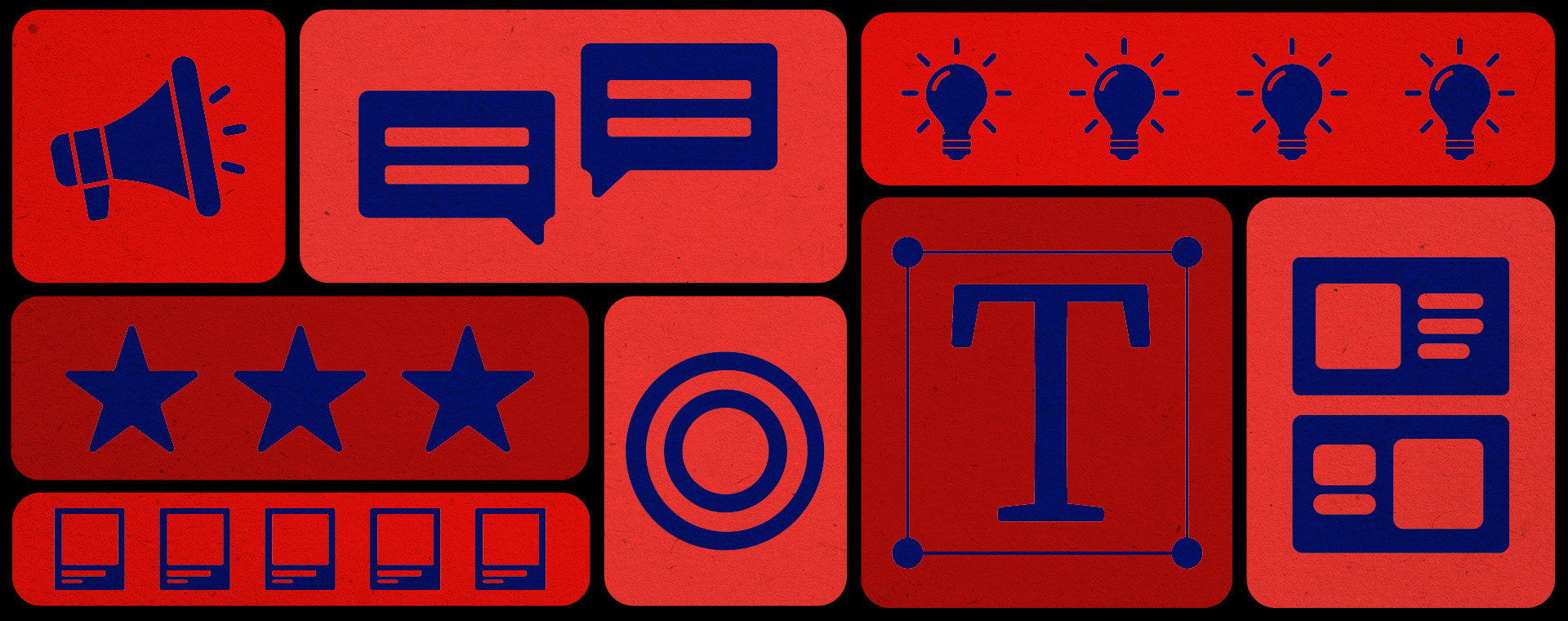How to set your design team up for success after a rebrand
By: Abagail Maxwell
June 11, 2025 | Reading Time: 5 mins
Woohoo—you rebranded! As exciting as rebranding is, it can also be a bit chaotic. You have to deal with collateral updates, new messaging, and mismatched logos. One of the keys to a great brand is consistency. If you want to tackle consistency after a rebrand, it’s important to set your design team up for success. In this blog, we’ll walk through how to make this happen using brand guidelines, templates, training, and decision-makers.
What is brand consistency and why is it hard to maintain after a rebrand?
Brand consistency means presenting your brand in a cohesive way across all touchpoints. This is important when you’re injecting your brand into everything you do. Some key aspects to consider are tone, logo, colour, typography, and imagery. Maintaining consistency is easier said than done, especially after a rebrand.
Some common reasons brand consistency can fall apart include:
- Old materials or collateral are still in use
- Teams aren’t sure how to apply the new branding
- There aren’t clear guidelines to follow
- There isn’t a consistent decision maker or set of eyes approving items before they’re put out in the world

Green Leaf Consulting Group is a great example of a brand that gets brand consistency right. They consistently use a professional tone of voice and have a recognizable visual style across all platforms from typography, colour palette, crop-styles, imagery to banner treatments.
Why is brand consistency important in B2B marketing?
In B2B, trust is crucial for gaining sales and fostering long-term relationships. Brand consistency plays a critical role in establishing that trust. Marq’s 2021 Brand Consistency Report found that 68% of respondents saw a 10% to 20% boost in revenue from consistent branding.
Here’s why brand consistency matters in B2B marketing:
- Builds trust: Buyers feel more confident that you’re stable and trustworthy when you have a cohesive message, tone and visuals.
- Differentiation from the competition: Consistent branding makes your company more recognizable in a crowded market. This helps communicate why you’re different, making it easier for buyers to choose you over competitors. Your brand identity becomes clearly recognizable amongst others when you consistently embody it.
- Increases authority: The trust and expertise built from consistent branding help position your company as a leader in the space.
How to support your design team
Now that you know the importance of brand consistency, how can you help maintain it? You’ll need to set up your design team with the right guidelines, tools, and support so they can lead with success.
Develop clear brand guidelines
One of the most helpful tools for maintaining consistency is brand guidelines. An agency should provide you with this after a rebrand. It’s crucial that everyone on the team gets access, so they can refer to it. These guidelines will provide direction, so design decisions aren’t a guessing game. They’ll also help answer questions like: What colour do I use? What style of photo do I pick? How big should the logo be?
Brand guidelines should include (but aren’t limited to):
- Brand values and positioning
- Brand tone and voice
- Logo usage
- Colours
- Typography
- Branded elements and imagery (e.g. illustrations, photography, patterns, and icons)
- Template and layout guidance
Brand guidelines will lay out a clear path for your designers and team to follow.

Create templates for non-designers
A big part of setting your design team up for success is equipping non-designers with items they need so your design team doesn’t get bombarded with asks and can focus on active efforts related to your ongoing marketing activities. For non-designers, maintaining brand consistency is possible through templates. According to a Capital One report, “82% of organizations use templates to ensure brand consistency”. Templates empower non-designers to create while staying on brand. This reduces strain on the design team. They can then channel their energy into bigger, more resource intensive projects.
Templates that you should have ready can include:
- PowerPoint decks
- Social media posts
- Case study layouts
- Word docs
- Email signatures and email layouts
- Standard reports
- Letterheads
- Newsletters

Establish a decision-maker for the brand
Brands are ever-changing, and there will always be new decisions to make even after a rebrand. That’s why it’s important to have a trusted decision-maker or a “Gandalf” for the brand. This role could be a team of folks you put together (like a designer, marketer, and UX person) or your most senior designer. Like Gandalf guiding the fellowship, they help keep the brand on track. They ensure updates stay cohesive, so the brand continues to look and feel unified. A decision-maker also supports the design team with clear direction and approvals. Additionally, they can document any changes in the brand’s guidelines.

Train your team on the new brand
Education is an essential step post-rebrand. How can you apply the brand accurately if you haven’t learned about it? Training sessions are a great opportunity for designers to learn the reasoning behind the new brand and ask questions. Equipping the team with knowledge will help them feel more confident in maintaining the brand’s consistency.

Give your designers the tools to stay on brand
Brand consistency is key in B2B. It builds trust, sets you apart from competitors, and increases authority. Maintaining consistency after a rebrand can be tricky to navigate, but it doesn’t have to be. You can equip your design team with brand guidelines, templates, a decision-maker, and training, so your brand stays cohesive.








